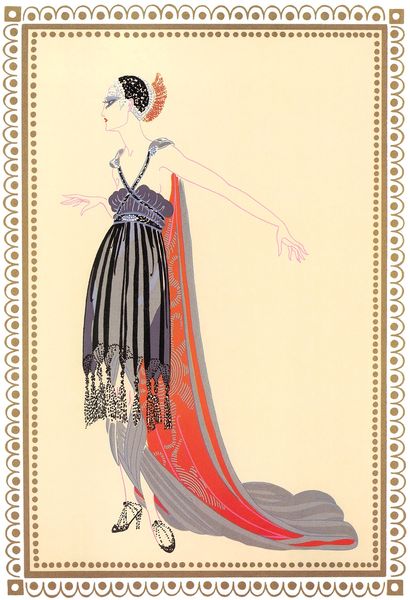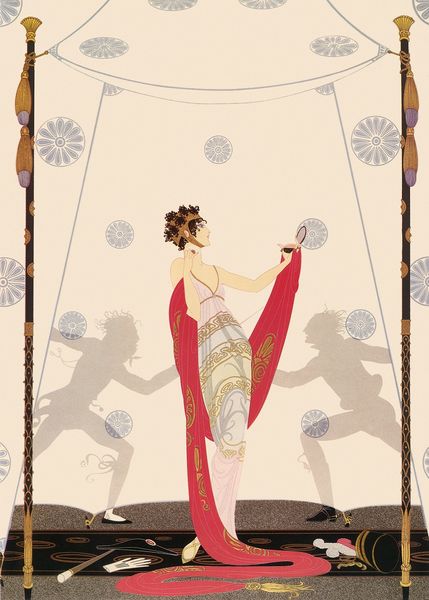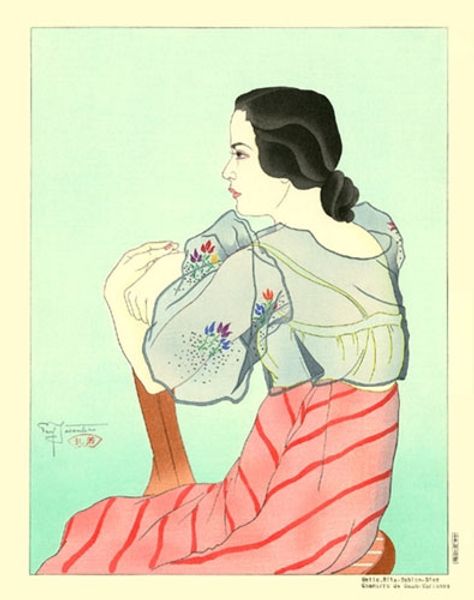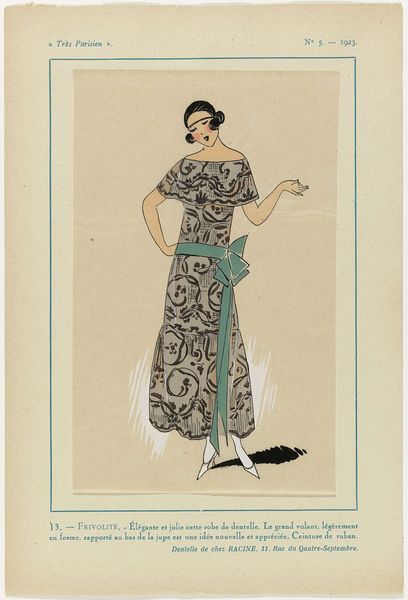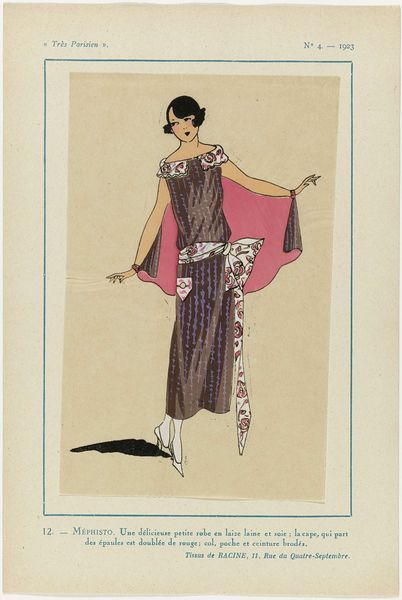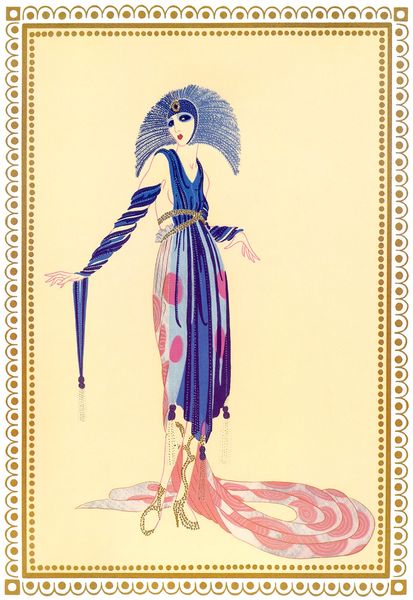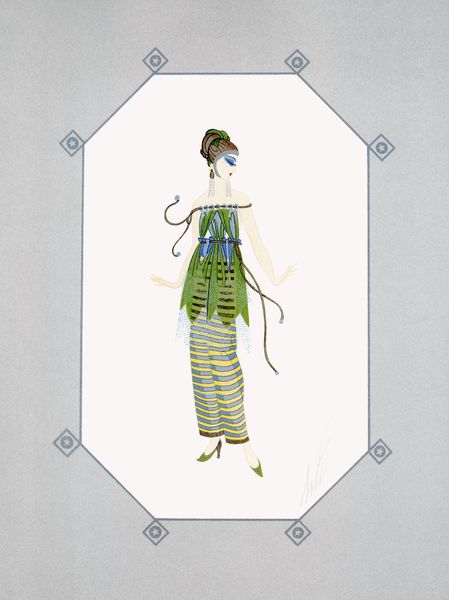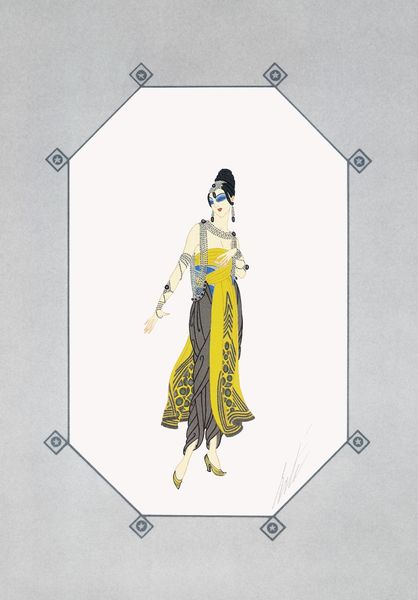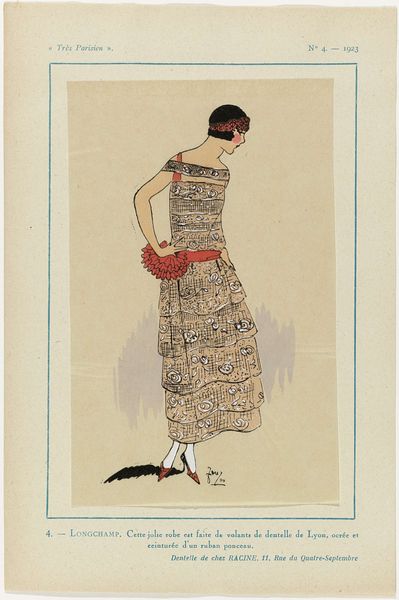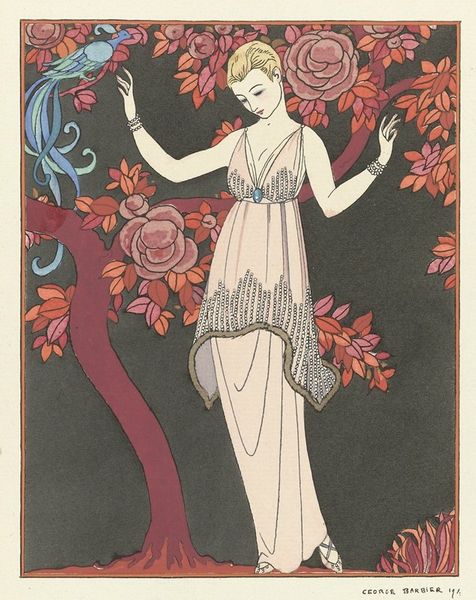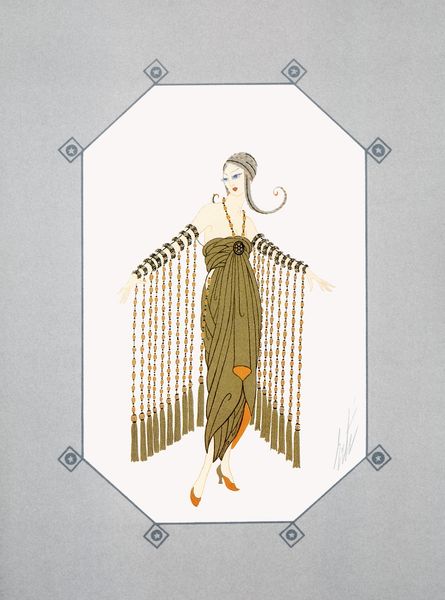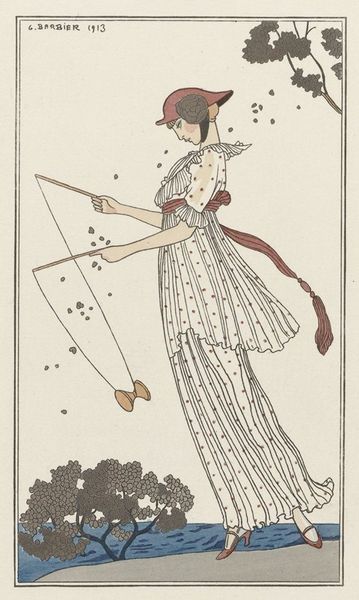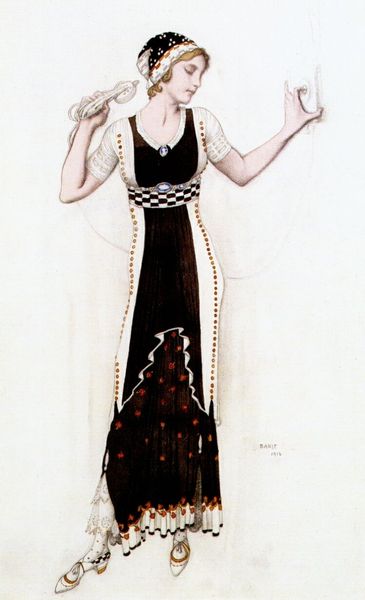
#
portrait
#
art-deco
#
figuration
#
historical fashion
#
costume
Copyright: Erte,Fair Use
Editor: Here we have Erte’s “Rose Gown.” It’s difficult to determine the exact date, but the Art Deco styling is so distinct. The dress itself seems almost impossibly elegant. What's striking to me is the way it embodies luxury, yet also hints at the complex labor behind it. How do you see this piece? Curator: Focusing on the material, consider the dress not merely as an image of luxury, but a product of very specific manufacturing processes. Think about the sourcing of materials like silk or rayon, and the potential for exploiting garment workers. Erte presents the finished product, seemingly divorced from its making, so one way to look at the work is as concealing these realities. Does this tension between display and production shift your understanding? Editor: That's fascinating. I hadn't thought about the exploitation aspect. It makes the "Rose Gown" feel like a beautiful facade, hiding potentially darker truths about its creation. Curator: Precisely! And look closer at the stylized rendering. This wasn't mass-produced ready-to-wear; Erte designed for couture houses and theater. We might ask, therefore, what kinds of class aspirations it conjures, who is it for, and how its consumption shapes its value. Editor: So, it’s less about the inherent beauty of the gown and more about the whole system that allows it to exist and be consumed? The artistry, the material, the making. Curator: Exactly. Consider its accessibility limited not just by cost, but the labor behind its construction as a deliberate commentary. Editor: It’s a perspective that encourages one to look beyond just the pretty picture and consider its social implications and origins of labour, and not separate "art" from labour and fashion. Curator: A more holistic point of view that considers all involved in the ecosystem of the piece.
Comments
No comments
Be the first to comment and join the conversation on the ultimate creative platform.
